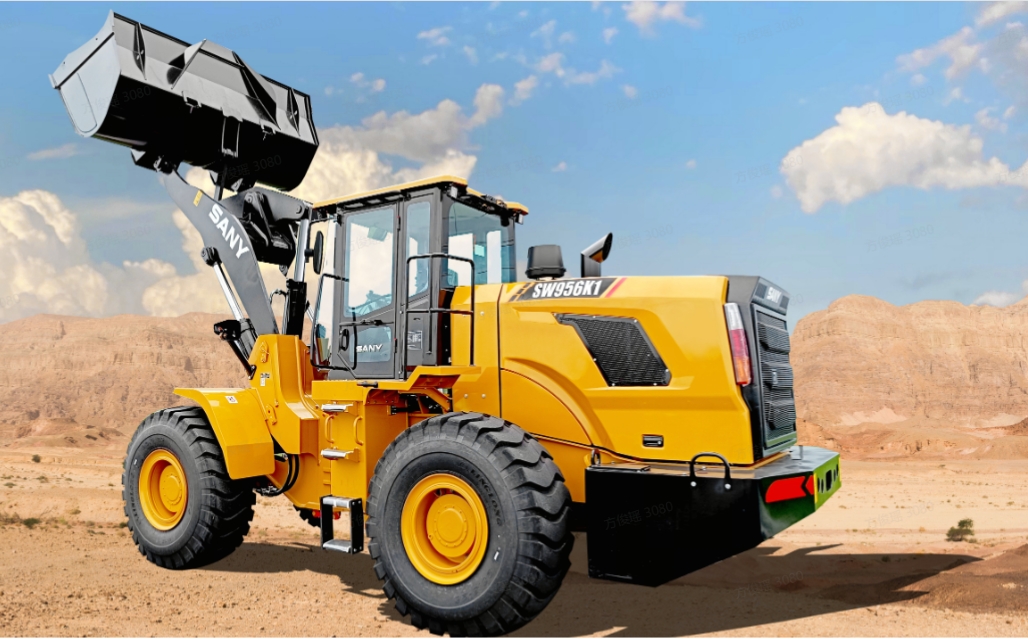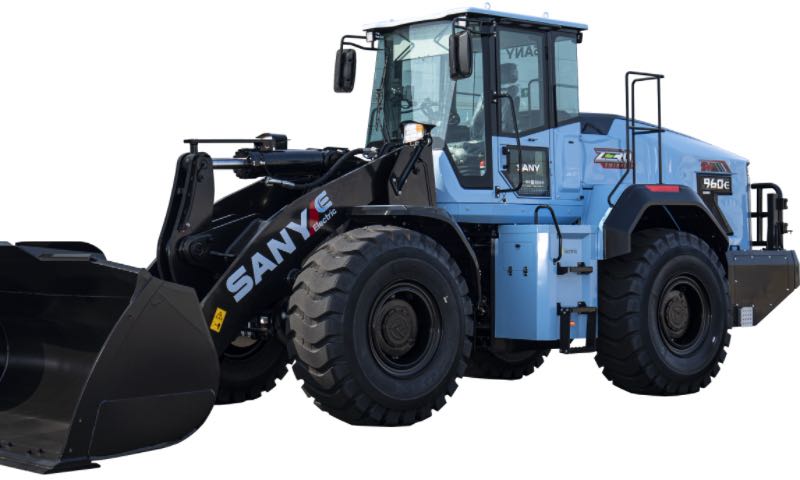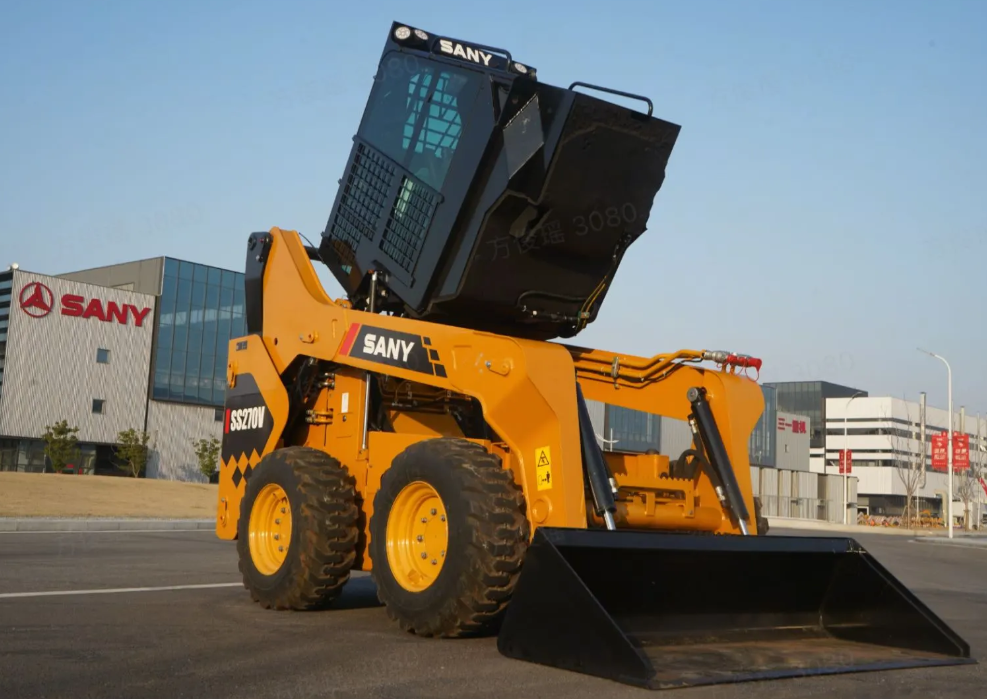What Is a Wheel Loader? A Practical Overview for 2025
This article explains what is a wheel loader, its working principle, applications, key components, types, sizes, and how to choose the right model to help project managers improve efficiency.
In construction, agriculture, industrial cleanup, and other sectors, efficient material handling and site operations rely heavily on heavy-duty equipment, with the wheel loader being one of the key machines. In fact, the wheel loader is not a complex piece of machinery; on the contrary, it offers high practicality and convenience. This article will discuss what is a wheel loader, its working principle, uses, key components, types and sizes, advantages, and selection tips to help project managers choose the right model for their projects.
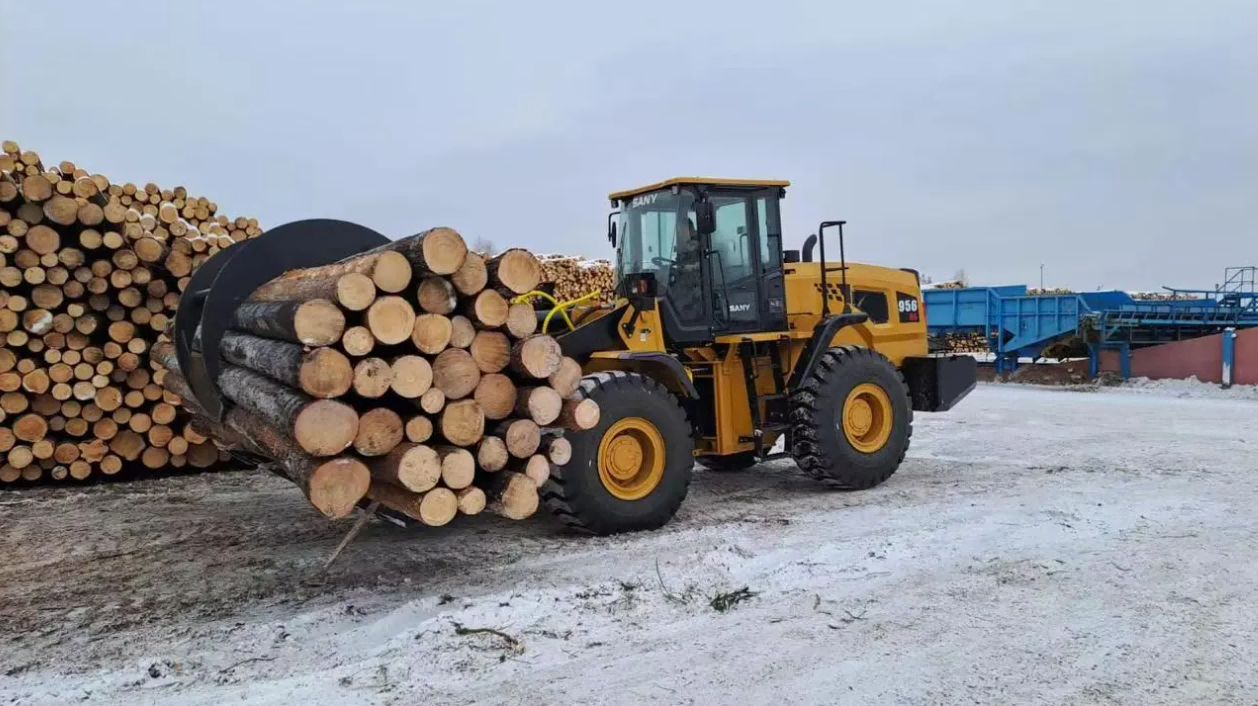
What Is a Wheel Loader?
Wheel Loader Definition
A wheel loader is a heavy-duty machine commonly used in construction projects and building sites, and also plays an important role in agriculture and industrial cleanup projects. It can load nearly any material, including gravel, sand, soil, etc. Since wheel loaders are wheeled machines, they offer good maneuverability on roads and do not cause damage to asphalt or concrete surfaces.
How Does a Wheel Loader Work?
A wheel loader works by inserting its front bucket into the ground, where the bucket scoops up and transports materials. The loader’s hydraulic system powers the bucket and other operations, which is similar to the operating logic of other lifting equipment. Some wheel loaders have a permanently fixed bucket, while others come with various attachments. Operators can adjust the load position in mid-air during operation, optimizing the use of material weight to improve overall efficiency.
Wheel Loaders vs Other Loaders
In addition to wheel loaders, there are several types of loaders, including skid steer loaders, tracked loaders, backhoe loaders, and swing loaders. These types differ significantly in terms of mobility, operating capacity, suitable environments, and size. Operators can select the most appropriate machine based on the specific situation.
Wheel Loader: The largest type of loader, equipped with four wheels. It is suitable for large-scale material handling on flat, solid surfaces like construction sites.
Skid Steer Loader: A compact and highly maneuverable loader, with a boom that extends beside the operator's cab. It changes direction using differential steering and is ideal for working in narrow spaces.
Tracked Loader: Equipped with tracks for superior off-road performance and stability. It is best for soft, uneven terrains, such as muddy or rugged surfaces.
Backhoe Loader: A hybrid machine that combines a front loader bucket and a rear digging arm. It is used for digging, backfilling, and loading tasks.
Swing Loader: A loader with a boom that rotates more than 180 degrees, allowing material loading and unloading from any side. This is useful for working in confined spaces, reducing the need to frequently move the vehicle.
What Are the Main Uses of a Wheel Loader?
With its flexible mobility and powerful material handling capabilities, the wheel loader can complete large amounts of loading and transportation in a short time. Its primary uses typically include:
Block Material Handling: Lifting and transporting heavy block materials such as concrete blocks and stone materials.
Log Handling: Used in forestry operations, including logging, cutting, and long-distance transportation of logs.
Rock Handling: For mining, quarries, and hard rock scenarios, wheel loaders perform rock loading and pit clearing tasks.
Waste Management: Used for landfill operations, waste recycling facilities, and tasks like waste collection, industrial waste transport, and recyclable material sorting.
Slag Handling: Designed for steel mills to transport hot slag from furnaces to cooling areas.
Bulk Material Handling: For transferring bulk materials like coal, gravel, and grains, using large-capacity buckets for efficient transport.
Agricultural Work: Used in farms, ranches, and agricultural processing plants to transport feed, grains, level ground, and clear greenhouses.
Key Components of a Wheel Loader
To achieve efficient operation, it’s important to understand the key components of a wheel loader, as they significantly impact the overall performance of the machine:
Engine and Powertrain: The engine drives the machine’s various systems, while the powertrain ensures the wheel loader has enough torque to move heavy materials. A fuel-efficient engine helps reduce operational costs.
Hydraulic System: One of the most important components of a wheel loader, the hydraulic system provides the power needed for lifting, tilting, and other bucket operations, offering precise control over the loader’s functions.
Loader Arms and Bucket: These are the most iconic components of the wheel loader. They are responsible for lifting, transporting, and dumping materials.
Operator's Cabin: The cabin is the control center of the wheel loader, equipped with all the controls necessary for the operator to manage the machine’s various functions. If you are interested in how to operate a wheel loader, it’s essential to become familiar with these core control components for safe and efficient operation.
Types and Sizes of Wheel Loaders
Apart from the core components, wheel loader types and sizes vary according to their application scenarios. They are generally categorized into small compact loaders, heavy-duty loaders, and large wheel loaders.
1. Small Compact Loaders
Operating Weight: Less than 20,000 lbs, with a load capacity of 1 to 4.5 tons.
Suitable for: Landscaping, small tasks, transporting lightweight materials, and snow removal.
2. Medium Loaders
Operating Weight: Between 20,000 and 40,000 lbs, with a load capacity of 5.5 to 6.5 tons in some models.
Suitable for: Handling heavier materials, suitable for construction, quarrying, and mining operations.
3. Large Wheel Loaders
Operating Weight: From 7.5 to 18 tons, exceeding 40,000 lbs.
Suitable for: Heavy-duty applications such as large-scale construction, mining, quarrying, and the transport of gravel and hazardous materials.
What Are the Advantages of Using a Wheel Loader?
No matter the type of wheel loader, it offers several unmatched advantages compared to other lifting equipment, especially in the following areas:
High Work Efficiency: Wheel loaders are more efficient at transporting materials and can navigate rough terrains.
Strong Load Capacity: Large wheel loaders can carry up to 18 tons, significantly improving single-load capacity compared to other machines.
Easy Operation and Maintenance: The design of the wheel loader is simpler, making it easier to operate and maintain than other equipment. When performing multi-functional tasks, the wheel loader only needs attachment changes to adapt to different jobs.
How to Choose the Right Wheel Loader for Your Project?
Before starting any project, it is essential to select the right equipment for the job. Choosing the right wheel loader largely depends on the weight of the materials that need to be handled and the tools required.
Choose Size Based on Weight
If the materials to be moved weigh ≤ 4.5 tons (such as packaged fertilizers, small plants, snow, soil, etc.), a small compact loader is ideal.
If the materials weigh between 2 and 6.5 tons (such as sand, gravel, and medium steel structures), a medium-sized loader is more suitable.
If the materials weigh ≥ 5 tons (such as large ores, gravel, steel slag, and heavy hazardous materials), a large wheel loader is required, along with specialized attachments.
For example, when quarrying, mining, or moving heavy materials, the SANY wheel loader (model SW405K) is a great choice. It has an operating weight of 10 to 25 tons and a rated load capacity of 3 to 7 tons, making it capable of handling demanding tasks with ease.
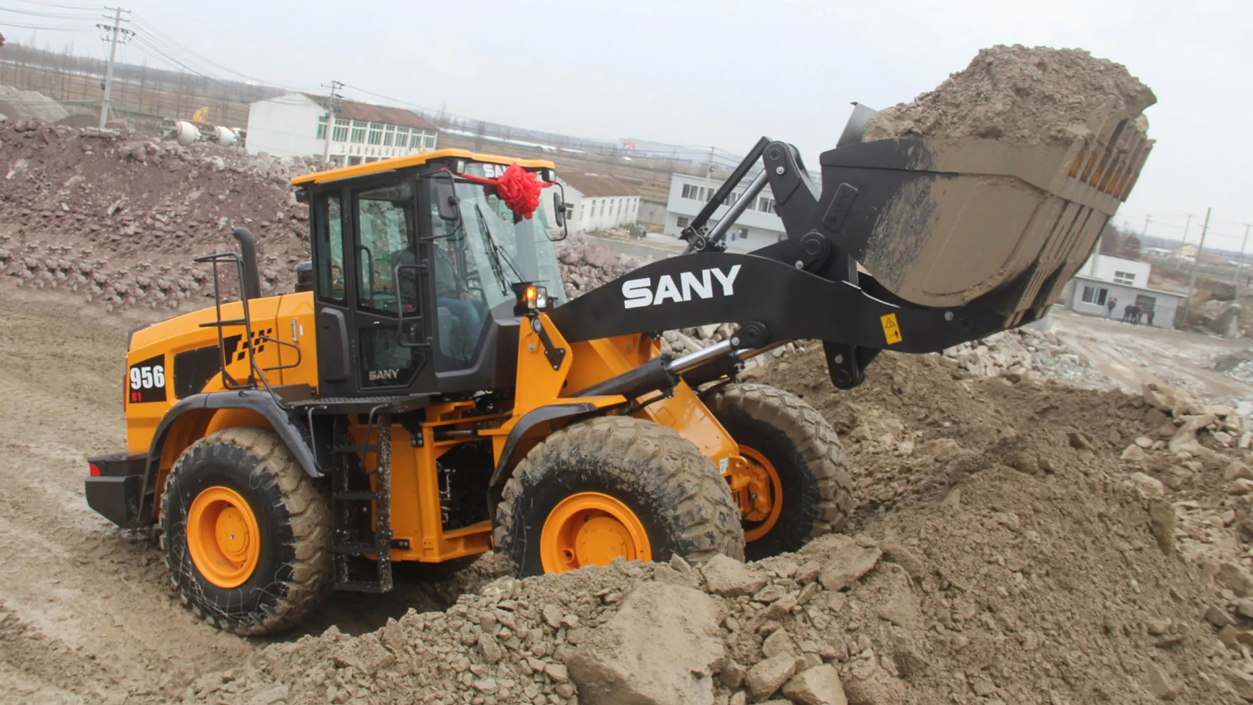
Choose Necessary Attachments Based on the Project
For loading materials, a bucket attachment is recommended.
For clearing the worksite, a rake attachment is ideal.
For lifting objects off the ground, a fork attachment can be used.
Conclusion
What is a wheel loader? As a heavy-duty machine, the wheel loader plays a crucial role in material handling for large-scale projects. In practice, operators should select the right model based on material handling weight and project type. Regular maintenance of core components ensures the wheel loader performs at its best, providing strong support for the smooth progress of any project.
FAQs
What does a wheel loader do?
A wheel loader is a versatile machine used for hauling, loading, and transporting large quantities of materials on construction projects. It is also used in agriculture, landscaping, road construction, and site cleanup.
What is the difference between a wheel loader and a loader?
1. Design Difference: A wheel loader typically has a unique design, with a front-mounted bucket attached to a rigid frame and articulated steering system, offering better maneuverability. In contrast, a "loader" is a broader term that includes various configurations, such as skid steer loaders and tracked loaders.
2. Load Capacity Difference: Loaders tend to be smaller and have lower load capacities than wheel loaders. Loaders are typically suited for handling smaller loads, while wheel loaders are designed for heavy-duty tasks and larger material handling.
3. Function and Applications: Wheel loaders efficiently transport large amounts of materials over short distances and are essential in construction, mining, and agricultural operations. Loaders, on the other hand, are more versatile, ideal for performing operations that require higher flexibility, precision, and convenience in tight spaces.
Is a wheel loader a bulldozer?
Although wheel loaders and bulldozers perform similar tasks, they are not the same type of equipment. Bulldozers use a heavy metal blade or scraper at the front to push materials along the ground. In contrast, wheel loaders are equipped with a large bucket at the front to scoop and transport materials.
What are the three types of loaders?
Loaders are essential heavy equipment used across various industries like construction, agriculture, and material handling. The main types of loaders are:
Wheel Loader: Equipped with a front bucket to scoop, lift, and transport materials such as dirt, gravel, sand, snow, and debris.
Skid Steer Loader: Uses opposite tracks or tires that rotate around a central point, enabling it to turn within its own length.
Backhoe Loader: Features a front loader bucket for lifting and transporting materials, and a rear backhoe for digging, trenching, and excavating tasks.
